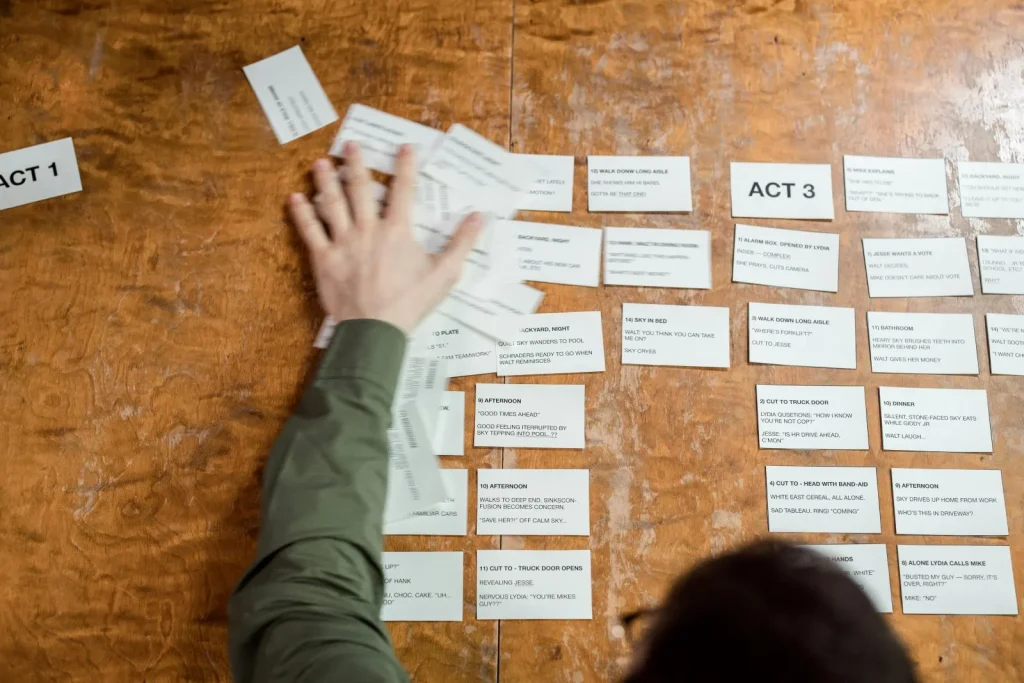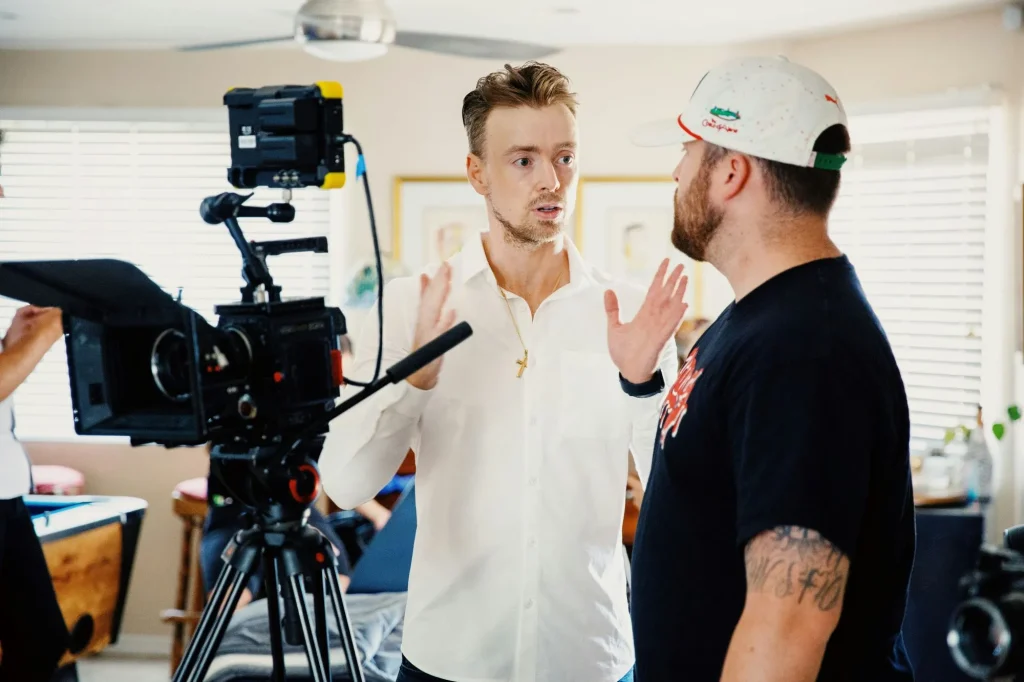Post-production is an essential part of making any type of video content, but many people are unaware of how complex the process can be. Here, we will go through all the important details about how to do video post-production like a pro and how to make it as efficient as possible.
But before we start, let’s quickly cover what video post-production is and why you can’t do without it.
What Is Video Post-Production?
Video post-production is the process of editing, mixing, and polishing video content. It is an essential part of the video-making process, and it can significantly boost the quality of the raw recording.
The post-production process can consist of many steps, but they mostly depend on the type of content you are making. For instance, some content like films will require special effects, while others like TikTok videos will adopt a simpler approach.
Either way, your content will need to go through post-production if you want to create a good video.
Why Is Post-Production Important?
Filming a video can take ages, and you’ll inevitably make mistakes along the way. But don’t worry — that’s completely normal.
Even with the best available equipment, it is nearly impossible to do everything in one take. However, you can minimize the amount of reshoots needed, thanks to post-production.
During post-production, you can choose the best scenes, polish those with issues, stitch multiple shots together, and improve the overall quality of the video. Regardless of the type of content, some form of editing will be necessary.
Post-production adds a layer of flexibility and an easy way to fix common mistakes. Most of the time, you won’t need to go back to re-record everything since you’ll be able to fix most issues.
How to Master Video Post-Production
Knowing what you need to do in post-production is just the first step of the process. You will also need to master the technical aspect of it to be ready to improve your videos. Here are the four things you’ll need to master to become a pro at video post-production:
1. Preparation Is Key — Think Beyond Post-Production
Filming videos involves much more than just post-production. The process consists of three phases:
- Pre-production
- Production
- Post-production
Each of these phases will have a significant impact on the final product. While pre-production and production are obviously not a part of post-production, a post-production pro will always keep them in mind since they do affect the quality of the final product.
You should always prepare for all three steps simultaneously to avoid overworking your team and have more time to polish the video. Professional filmmakers will always have the bigger picture in mind.
The less fixing you need to do in post-production, the more time you will have to improve already good elements. Try to plan as much as you can in advance to avoid having to repair it later.
2. Get to Know the Video Post-Production Process Like the Back of Your Palm
Expertise is one of the main things that separate professionals from amateurs. Getting familiar with every step of the video post-production process can help you narrow the gap and get you closer to becoming a professional in the field.
You must master the entire video post-production process, potential scenarios and steps, and be prepared for whatever happens along the way. The amount of time you will have to spend in post will depend on the project. Sometimes, you won’t need to go through all the steps of the process and can adopt a more simplistic approach.
The most common steps of post-production include:
- Editing
- Color grading and correction
- VFX
- Animation
- Sound editing
- Sound effects and Foley
- Sound mixing
Depending on the type of content you are making, you might be able to skip some of these steps. For example, documentaries or sports events won’t need to rely on visual effects. On the other hand, these are essential for sci-fi movies and TV shows. The more adept you are at identifying what steps you can skip, the faster (and easier) post-production will be for you.
3. Create and Follow an Optimal Post-Production Workflow
While the process of post-production is the final step in making video content, you don’t need to wait until filming is over to start it. In fact, many experienced directors begin the process as soon as there is enough footage.
Following these steps will save you a lot of time, and you will be able to focus on the process during each of the stages of filming. Getting familiar with the video post-production workflow will allow you to dedicate enough time to each of these elements and make your content shine.
- Rough cut — The first rough edit of the movie serves to create coherent footage. As the scenes are filmed, you can start logging them and creating the rough cut as early as you like. Naturally, you will need all scenes to create this version, but you can still add to it on the go.
- Picture lock — Picture lock is the assembly edit with all scenes in place in the correct order. If you are satisfied with the first version of the movie, you can proceed to the next step.
- Editing — Once all scenes are in place, you can edit them. The editing process includes cutting, adjusting, color correction, special effects, stabilization, and anything else that will improve the quality of each scene.
- VFX — While visual effects are a part of editing, this step can be separate if you need plenty of effects. VFX is common for modern movies that rely on CGI to make the scenes shine. For those who just need to polish a few scenes, there is no need to make this a separate step. You can start with VFX as soon as you have scenes that require them.
- Sound — Audio post-production is a subcategory of post-production, and it includes everything from ADR to foley recording and music. Some videos will require scoring, soundtracks, special audio effects, and more. You also need to ensure every sound is balanced and that the audience can hear everything.
- Final cut — Once everything is ready, you will get the first version of the final product. The final cut serves to show how the product will look once everything is finished. Remember that there is still time for a few final touches if you still need to adjust something.
- The finished product — If you are satisfied with the version, you can export it in any file format you need, and it will be ready for your audience.
Since each video project is unique, you won’t always need to go through all the steps. It is all situational, so the key here is knowing which ones to focus on and which ones to skip to make your project shine.
4. Don’t Rush It
Creating something new can be challenging. The complexity of your project will affect the length of post-production, but even the simplest project will take time. And rushing the process is a recipe for disaster.
The more time you spend on these steps, the better the final product will be. But there’s one more thing that can make your life easier — nailing it in the shooting phase.
If the footage you receive is great, you won’t need much time to adjust it. Keep in mind that the process of post-production requires a lot of work. Even if you work on the simplest project, there are many moving parts you and your team will need to worry about.
You must allow your team to have enough time to do their jobs. Even though the director is at the helm, your teammates will play an important role as well. Try to avoid rushing the entire process and overworking your team — the content’s quality will suffer.
Need Help Perfecting Your Videos in Post-Production?
If you don’t have a post-production team or you don’t have time to tackle the entire process, why not hire professional help? Here at Force Media, our team has years of experience doing post-production for various projects and can handle the entire process for you, including:
- Voice overs
- Video post-production
- Audio post-production
- Music creation
- Dubbing
- Sound design
- And more
There is no reason for you to tackle this ordeal alone. Get in touch with us and tell us more about your upcoming project — we’d love to hear about it!


